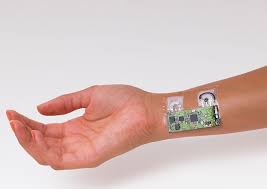Chronic pain affects millions of individuals worldwide, disrupting their daily lives and overall well-being. Advances in technology have made managing pain more accessible through pain management apps. These applications offer users tools to track symptoms, connect with healthcare professionals, and develop personalized strategies for addressing discomfort. Pain management tools help provide patients with convenient access to resources and support.
Tracking Pain Patterns
Telehealth technology helps users track their pain levels, symptoms, and triggers over time for more comprehensive pain management. Individuals can identify patterns or factors contributing to their discomfort by recording these details through daily logs. Tracking tools may include pain scales, symptom charts, and prompts to add notes about environmental or lifestyle factors that could affect pain. This data can be compiled into detailed reports that patients can share during consultations with healthcare providers, offering valuable insights to guide treatment plans.
Accessing Remote Consultations
Telemedicine integration within pain management is revolutionizing how individuals manage their health, enabling users to connect with healthcare professionals through remote consultations. This feature eliminates the need for frequent in-person visits, which can be particularly challenging for those with mobility issues, chronic pain, or demanding schedules. By reducing travel and wait times, telemedicine fosters greater convenience and accessibility.
Individuals can discuss their symptoms in detail during virtual consultations and receive personalized advice. They also explore potential changes to their treatment plans, like medication adjustments or customized exercises. This approach offers a convenient way to address health concerns without the stress of traveling to a clinic.
Many of these apps provide features like symptom tracking and progress monitoring, which can be shared directly with healthcare providers. These innovations are shaping a future in which healthcare is not only more accessible but also more patient-centered. They empower individuals to take an active role in their well-being while overcoming traditional barriers to care.
Developing Relief Strategies
Many pain management apps include educational resources to empower users to adopt effective coping techniques. These resources may cover topics such as stretching exercises, mindfulness meditation, or nutrition for better pain control. Interactive components like guided meditations or exercise videos make incorporating these strategies into daily routines easier. Personalized reminders also help users maintain consistency with their chosen methods, fostering long-term improvements in well-being.
Building Supportive Communities
Telehealth technology may also offer community forums or social features that connect users with others who experience similar challenges. These spaces encourage individuals to share tips, stories, and encouragement, helping to reduce feelings of isolation. Building such connections adds an emotional support element to pain management, promoting a sense of belonging and shared understanding. This sense of community can play a powerful role in motivating individuals to stay consistent with their treatment plans.
An Accessible Approach to Pain Management
Telehealth technology represents a significant advancement in simplifying how individuals monitor and address their discomfort. By incorporating tracking features, remote consultations, personalized strategies, and supportive communities, these tools empower users to approach their pain with greater awareness and practical solutions. While not replacements for professional care, these tools work effectively alongside traditional methods to give users greater control over their health.

